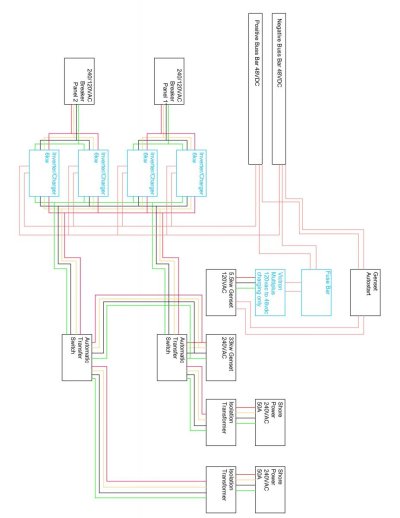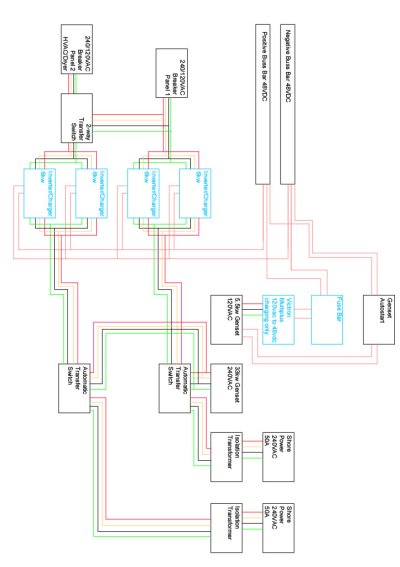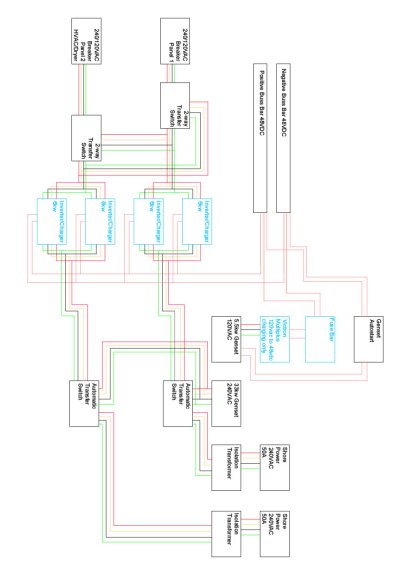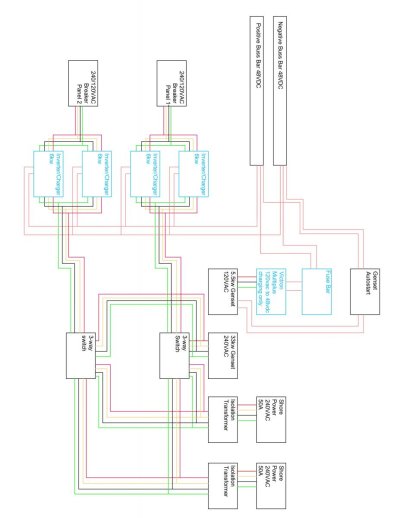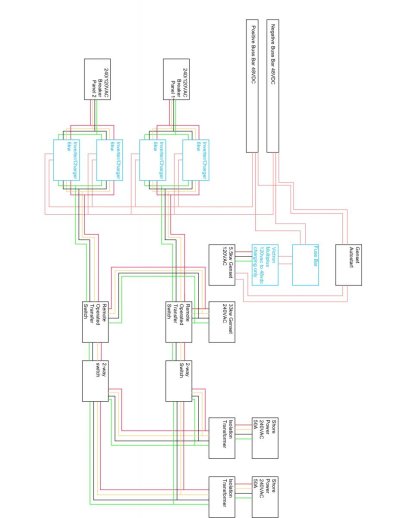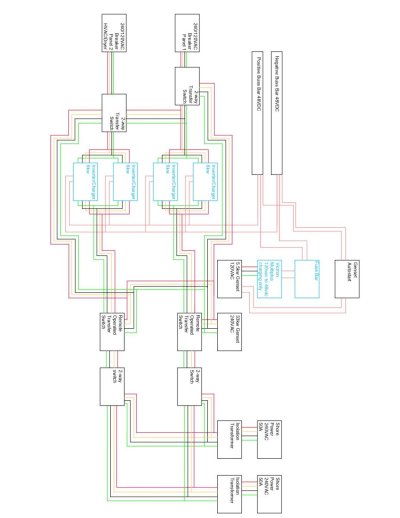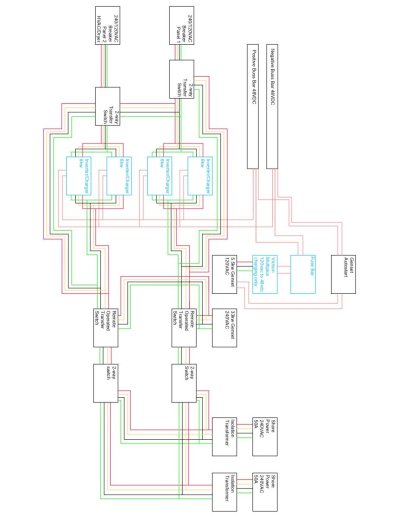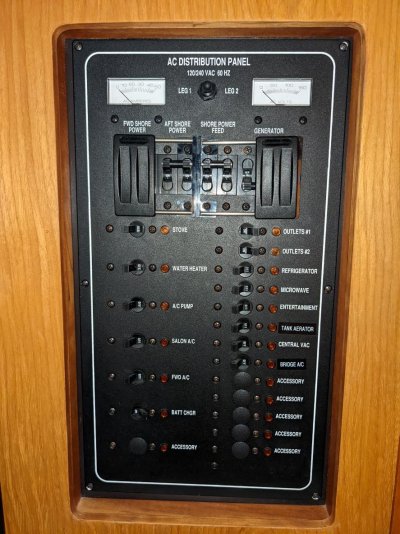Hello again everyone.
I am working on the electrical design for my refit. I have a question, I am looking at using 50A plugs, this is due to docks having 100A service fewer in between, and the cost of connectors and cabling, and handling the cable, seems to increase exponentially, rather than linearly.
I have 50A connectors and wiring on each side of my boat. My questions are running into the main electrical panels.
Currently, there are no electrical panels, I removed them and went from scratch.
I have 24kw of inverter/charger input and a 33kw/240v genset.
How would I handle the wiring of breakers off of this without causing issues?
The genset and inverter charger can all run through a single transfer switch. If it was 100A shore power, it could run through a single 3-way transfer switch.
Power distribution to the breakers that need the different inputs is easily done, as I plan to convert AC units to one shore power and the rest to the other shore power.
The picture attached is my idea of how to do it. Any thoughts, inputs, etc would be greatly appreciated as I need to start ordering the electrical gear in the next week or so.
Thank you as always
I am working on the electrical design for my refit. I have a question, I am looking at using 50A plugs, this is due to docks having 100A service fewer in between, and the cost of connectors and cabling, and handling the cable, seems to increase exponentially, rather than linearly.
I have 50A connectors and wiring on each side of my boat. My questions are running into the main electrical panels.
Currently, there are no electrical panels, I removed them and went from scratch.
I have 24kw of inverter/charger input and a 33kw/240v genset.
How would I handle the wiring of breakers off of this without causing issues?
The genset and inverter charger can all run through a single transfer switch. If it was 100A shore power, it could run through a single 3-way transfer switch.
Power distribution to the breakers that need the different inputs is easily done, as I plan to convert AC units to one shore power and the rest to the other shore power.
The picture attached is my idea of how to do it. Any thoughts, inputs, etc would be greatly appreciated as I need to start ordering the electrical gear in the next week or so.
Thank you as always
Attachments
Last edited:

